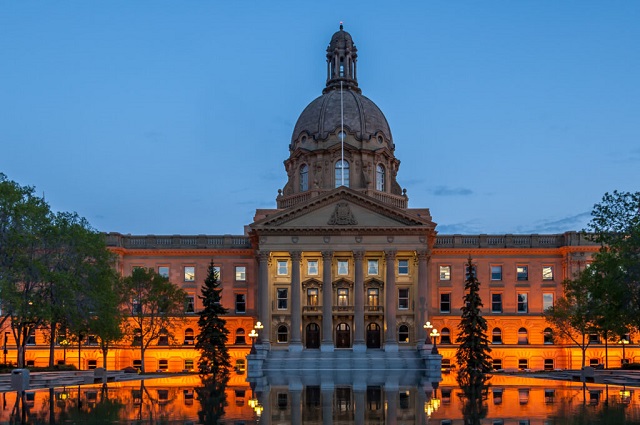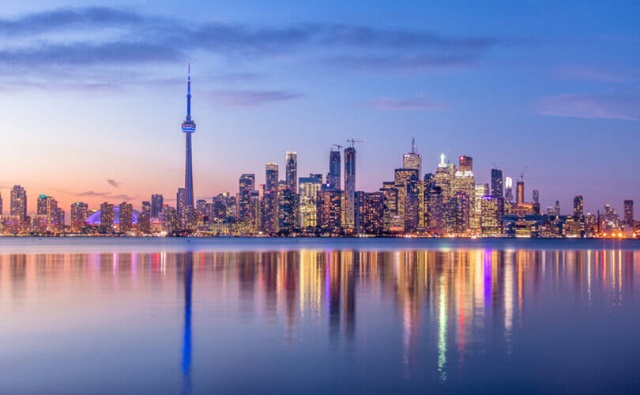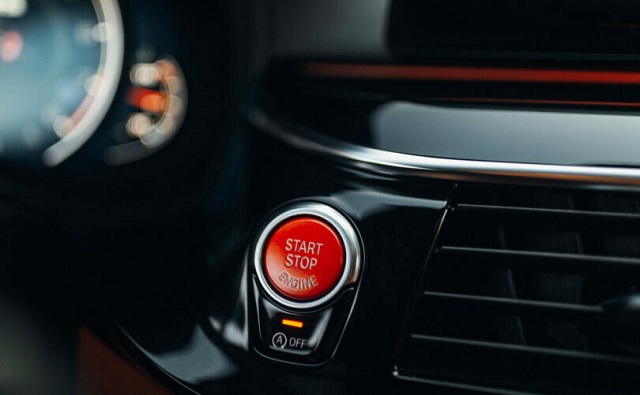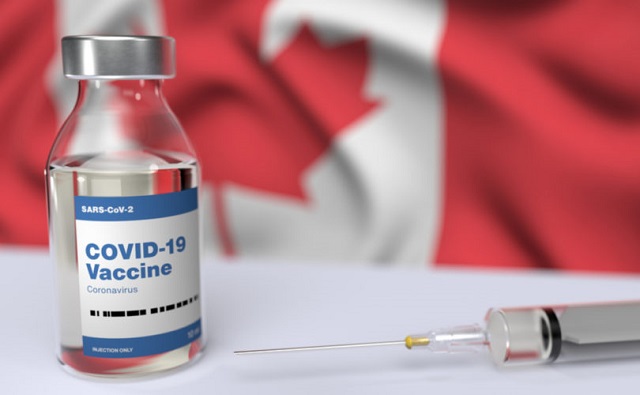Brownstone Institute
Listen to the Kids
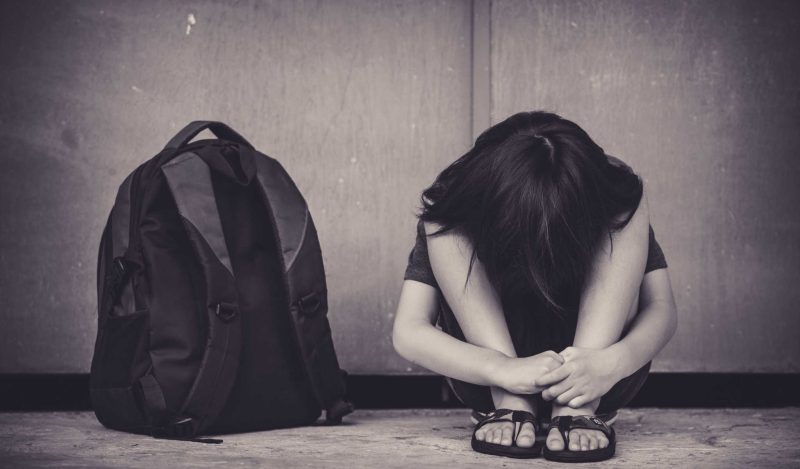
From the Brownstone Institute
BY
People often ask me why I still care about school closures and other covid restrictions that harmed a generation of children. “Schools are open now,” they say. “It’s enough already.”
No. It’s not. The impact to this generation of children continues. And so do many of the restrictions impacting young people.
It was just this week that New York City public schools lifted the ban on unvaccinated parents entering public school buildings.
This meant a parent who was unvaccinated could not attend a parent-teacher conference in person. Or watch their child play basketball. They could, however, attend a Knicks’ game at Madison Square Garden with 20,000 other basketball fans. This rule seemed designed specifically to punish children.
Colleges are some of the last places requiring vaccination — even boosters, in some instances, like at Fordham University. These young adults are least at risk from covid, most at risk from vaccine-induced myocarditis and are some of the last Americans required to be boosted. It makes no sense.
Rather than do my own rant about why I still care about the lasting harm done to children, I’d like to let the kids and parents speak for themselves.
The teens and parents cited below are all featured in a documentary film I’m making. I want their stories told. This all needs to be documented because the narrative is already shifting:
“Yeah schools shouldn’t have been closed so long but how could we have known! It’s over now. Time to move on.”
“Let’s declare an amnesty. We need to forgive the hard calls people needed to make without enough information. Good people did the best they could!”
“The open-schoolers may have been right but for the wrong reasons so they’re still terrible people. And besides it’s not a competition! No gloating! Let’s focus on the future!”
But it’s not over. The kids are not alright. And there is insufficient focus on how to reintegrate them and help them recover. This article, from the New York Times on January 27, lays bare the harms done, the possible lifetime effects, and the lack of attention and care being paid to helping kids recover:


I will continue to advocate for them, to tell their stories, to try to get them the help they still need and deserve. And to ensure this never happens again.
It’s time we listened to the children and parents impacted.
Garrett “Bam” Morgan, Jr., high school student. Astoria Queens, NY:
“I was so upset. Why is it that someone who pays for school and has more money to throw around . . .why do they get to play football? And I don’t. What is the difference? Because we’re playing the same sport. It’s not like they’re playing something totally drastically different. It’s the same sport. We’re doing the same things, and they get to practice, they get to play. And I don’t, and for me it was just like, why? Why me? Why my teammates? Why is it that we don’t get to have fun? Why is it that we don’t get to play the sport that we love too? How am I going to get into a college if I don’t have a junior year of football?
“I was gaining weight. And I was getting in a place where I had to start thinking of alternatives to football, thinking of life without football. Then I would try and go out and play with my friends, towards 2021 when it started to become, okay, you can somewhat go out, just stay socially distanced. But by that time, the damage was done, right?”
Scarlett Nolan, high school student. Oakland, CA:
“I didn’t make any new friends. No one did. I mean, how could you, you’re just talking to literal black boxes on a computer.”
“I don’t wanna blame it all on school closures, but it’s been a really, really big thing for me. That’s changed my life so much. That’s not how it’s supposed to go in school. You’re supposed to have school. It’s supposed to be your life. School is supposed to be your life from kindergarten to senior year. And then you go to college if you want, but that’s supposed to be your life. That’s your education. You have your friends there, you find yourself there. You find how you wanna be when you grow up there. And without that, I lost who I was completely. Everything who I was. I wasn’t that person that worked to get straight A’s anymore. I didn’t care. I was just sad.”
Ellie O’Malley, Scarlett’s mom. Oakland, CA:
“She had finished her eighth grade. She had missed everything. She’d missed her graduation. She’d missed this trip to Washington. And then she started her new school [high school] on-line. [She was] very disengaged, never saw people’s faces, no one had the camera on. I mean it was school in like the thinnest most loose [sense] of the word. For the most part it was pretty dire and terrible. By January 2021, she really just no longer had the motivation to do it. She wasn’t getting out of bed. She was really depressed at that point.”
“A lot of it was just mental health, suicidal tendencies, self-harm. The first time Scarlett went to hospital, she kind of had a bit of a nervous breakdown. I’d never experienced that. She was screaming and clawing at herself. And we were like, what do we do? What do we do?”
Miki Sedivy, a mom who lost her teenaged daughter Hannah to an accidental drug overdose in 2021. Lakewood, CO:
“You’re taking children out of their natural environment of playing with each other, interacting socially and learning coping skills by interacting with other children. And when you take all of that away and all of a sudden these kids are in isolation, they mentally don’t know how to handle it. We can go [through] short times of isolation, but we’re talking a year and a half. [That’s] of a lot of isolation.”
Jennifer Dale. Her 11-year-old daughter has Down syndrome. Lake Oswego, OR.
“The school closures were devastating for her. I don’t think I realized it at first. At first I thought it was safer. Lizzie, a child with Down syndrome, was probably more susceptible to a respiratory virus. She’s had more respiratory issues than her siblings. So at first I thought it was the right thing to do As time went on, I don’t think people realized how isolated she was. She doesn’t have a means of reaching out and saying Hey, how you doing? I miss you. I wanna see you.”
“What Lizzie really needs is to look at her peers and how are they zipping up their jacket, or how are they coming in in the morning and making a food selection for lunch. That peer interaction and that peer role modeling is some of the best learning that my daughter can experience. But that role modeling is gone. When you’re online she doesn’t get to see what the other kids are doing. She wasn’t out seeing people. Nobody knew that she was struggling. It was all in our house. It was impossible for a young person with cognitive delays to understand why, why was the world suddenly closed? Why suddenly could I not see my friends? Why am I only seeing them on a screen and how do I interact?”
Am’Brianna Daniels, high school student. San Francisco, CA.
“As time moved on, like later in the year, I started to realize I really wanted to be back in school. I was 24/7 [on Zoom] and I think that’s what took a toll on me. . . I actually stayed doing Zoom in my living room that way I wasn’t tempted to fall asleep or anything. This did not help. I still did fall asleep sometimes.”
“I had like very little motivation to actually get up, get on Zoom and attend class. And then I think coming up on the year anniversary of the initial lockdown and then the lack of social interaction is kind of what took a toll on my mental health since I am such a social person. And so it really got to a point where I was just not going to class.”
“And it got really bad to the point where I was either over-eating or just not eating very much, and I was kind of dehydrated during my depressive moods. And eventually I did get in contact with the therapist. It helped a little bit, but not to the extent that I would have hoped.
Nelson Ropati, high school student. San Francisco, CA.
“I just didn’t like staring at a screen for an hour for class. I just couldn’t do it. I would fall asleep or just lose focus easily.”
“It wasn’t really mandatory to go to class. So I ain’t gonna lie. I didn’t really go to class the rest of my junior year when covid hit and they kind of just passed everyone.”

Lorna Ropati, Nelson’s mom. San Francisco, CA.
“I felt bad for him because then that’s when he started doing nothing else, but just like eating. I said you’re not hungry. It’s just a habit. Don’t go to the fridge. He just mainly stayed home and did whatever he could through his on-line courses and just stayed home. I think he didn’t go out of the house at one point for six months. He didn’t go nowhere. He never even stepped out of the house. So that was not good. I said, you need to get out, you need to stop being in this little shell and bubble that you’re in. It’s okay. You can go out.”
Jim Kuczo, lost his son Kevin to suicide in 2021. Fairfield, CT.
“Well we were very concerned because of the grades — that was the tip off. But again, it was hard because you can’t go out with your friends. We were concerned. We asked the guidance counselor and the therapist, is he suicidal? They said no.”
“You cannot treat kids like prisoners and expect them to be okay. I think that we, our leaders, put most of the burden on children.”
“I went through lots of guilt — what did I do to cause my son to kill himself.”
Kristen Kuczo, Kevin’s mom. Fairfield, CT.
“He [Kevin] wound up not playing football and then we kind of just started noticing he just was doing less and less. His grades were starting to drop. Really the biggest red flag for me was the grades dropping.”
“The day after he took his life, I was supposed to be having a meeting with the guidance counselors and we were looking into getting him a 504, which would allow him extra time to do things and possibly on exams. We were pursuing that as a possibility to try to help support him in the school setting. Because he had spoken to us about having trouble focusing and feeling like he just couldn’t do it.”
“All these doctors, they weren’t taking anybody. They weren’t taking patients because they were full. They didn’t have any space to take on new clients. It was shocking. So I didn’t have an appointment with a psychiatrist until about a week and a half after Kevin passed.”

I’ll leave you with a few words from Garrett Morgan, Jr. He’s struggling to get his life back on track. To get his grades back up. To lose the 80 pounds he gained. To get back in shape. To play football again. To get that college scholarship.
He’s a fighter. And I have confidence he’ll succeed. But he won’t forget what he and his peers lost, what was taken from them, and how much tougher his road ahead is because of it.


“This is something that my generation will not forget. This is also something that my generation will not forgive. The memories that we have lost, the experiences that we have lost, the skills that we have lost because of covid. And now we have to regain that and go out into the world. It is going to be something that will define us.”
Reposted from the author’s Substack
Brownstone Institute
The Predictable Wastes of Covid Relief

From the Brownstone Institute
BY
As documented in a 2023 report from the Electronic Privacy Information Center, more than seventy local governments used ARPA funds to expand surveillance programs in their communities
If you ever had the vague sense that Covid relief funding worked in a manner akin to US aid packages in failed Middle Eastern dictatorships, your instincts weren’t wrong.
First off, there were cases of just outright fraud nearing the $200 billion mark with drug gangs and racketeers collecting Covid unemployment benefits from the US government, with some recipient fraudsters not even having the common decency of being honest American fraudsters.
Even worse, though, were some legitimate uses of Covid funds that actually counted as legitimate despite being laughably frivolous or clearly unrelated to nominal goals connected to public health or helping communities deal with the economic impact of the virus – or, more accurately, the lockdowns.
One of the most should-be-satirical-but-actually-real examples of a legitimate use of Covid cash was a researcher at North Dakota State University being awarded $300,000 by the National Science Foundation through a grant funded at least in part through the American Rescue Plan Act of 2021 to aid her in her 2023 efforts to reimagine grading in the name of equity. (If none of that makes sense, please don’t hurt yourself with mental pirouettes.)
Other more mundane projects pertained to prisons and law enforcement using Covid relief money for purposes that extended well-beyond simply paying salaries or keeping the lights on. In 2022 The Appeal and The Marshall Project reported on how large sums of Covid money went to prison construction and expansion projects and to outfit police departments with new weaponry, vehicles, and canines. Regardless of how you feel about law enforcement or our prison system, these probably did little to stop the spread of Covid or keep out-of-work bartenders afloat while public health bureaucrats consulted horoscopes or goat entrails or their equally useful models to divine the proper time to let businesses reopen safely at half-capacity to diners willing to wear a mask between bites but too afraid to leave their homes.
Yet, of course, that didn’t stop people from trying to make the case that these expenditures absolutely were essential to slowing the spread. Often coming off like precocious children explaining to their parents how a new puppy would help teach them responsibility or an overpriced pair of sneakers would facilitate their social-emotional development by ensuring the cool kids would like them, local sheriffs and city managers were reported as claiming prison expansions could help prisoners social distance from each other, new tasers would help officers social distance from suspects, and new vehicles would allow officers to take their cars home with them rather than share one with another officer who might end up contaminating it with their Covid cooties.
But even worse than the funds that were outright plundered or just snatched up as part of a cash grab were those that were used on projects that helped further erode the freedoms of American citizens.
As documented in a 2023 report from the Electronic Privacy Information Center, more than seventy local governments used ARPA funds to expand surveillance programs in their communities, purchasing or licensing gunshot detection systems, automatic license plate readers, drones, social media monitoring tools, and equipment to hack smartphones and other connected devices.
Sometimes EPIC reported that this was done with little, if any, public debate over the civil liberties and privacy concerns inherent to these tools. In one case from a town in Ohio, approval for ARPA-funded ALPRs – cameras that can create a searchable, time-stamped history for the movements of passing vehicles – came after only a 12-minute presentation by their police chief.
Similarly, schools also likely used money from ARPA, as well as the 2020 Coronavirus Aid, Relief, and Economic Security Act, for their own surveillance purposes, although documentation of how schools used their Covid money is said to be somewhat spotty at best.
Vice News in 2021 reported how Ed Tech and surveillance vendors such as Motorola Solutions, Verkada, and SchoolPass marketed their products as tools to help reduce the spread of Covid and allow schools to reopen safely.
Some attempts such as Vice’s description of SchoolPass presenting ALPRs as a means to assist with social distancing come off like police departments explaining the social distancing benefits of tasers.
Others, however, such as Motorola plying schools with lists of behavioral analysis programs that “monitor social distancing violations” and room occupancy while “automat[ing] the detection of students who are not wearing face masks,” seem to offer a glimpse of the dystopian future into which we are heading – as do the other surveillance tools bought with Covid cash.
Maybe at some point Disease X, about which our ruling class has been warning us, will hit and the additional drones, ALPRs, and social media monitoring tools bought by the law enforcement agencies reported on by EPIC will be used to monitor adults for social distancing violations and automatically detect who isn’t wearing a mask. Maybe those tools will just be used to keep a digital notebook of the daily activities of everyone while police reassure us that they promise only to look at it when they really really need to.
In either case, though, if you currently have the vague sense that post-Covid America is a little more like a Chinese surveillance state than in the Before Times, your instincts are dead-on.
Brownstone Institute
Book Burning Goes Digital

From the Brownstone Institute
BY
In March 2021, the Biden White House initiated a brazenly unconstitutional censorship campaign to prevent Americans from buying politically unfavorable books from Amazon.
The effort, spearheaded by White House censors including Andy Slavitt and Rob Flaherty, began on March 2, 2021, when Slavitt emailed Amazon demanding to speak to an executive about the site’s “high levels of propaganda and misinformation and disinformation.”
Their subsequent discussions remain unknown, but recently released emails from the House Judiciary Committee reveal that the censors achieved their intended result. Within a week, Amazon adopted a shadow ban policy.
Company officials wrote in internal emails, “The impetus for this request is criticism from the Biden administration about sensitive books we’re giving prominent placement to, and should be handled urgently.” They further clarified that the policy was “due to criticism from the Biden people,” presumably meaning Slavitt and Flaherty.
At the time, “vaccine misinformation” was parlance for inconvenient truths. Five months after the Amazon censorship crusade, Twitter banned Alex Berenson at the Government’s behest for noting that the shots do not prevent infection or transmission. Senator Elizabeth Warren (D-MA) favorably cited his Twitter ban in a September 2021 letter to Amazon calling for increased censorship of books.
A similar process occurred at Facebook. Mark Zuckerberg wrote in internal emails that the platform decided to ban claims related to the lab-leak theory in February 2021 after “tense conversations with the new Administration.” Facebook executive Nick Clegg similarly wrote that the censorship was due to “pressure from the [Biden] administration and others to do more.” Another internal Facebook email from August 2021 wrote that the company had implemented new “misinformation” policies “stemming from the continued criticism of our approach from the [Biden] administration.”
Not only does the Biden regime’s call for de facto book bans lead to the suppression of true information regarding lockdowns, vaccine injuries, and the lab-leak theory; it was also a clear violation of the First Amendment.
The Supreme Court weighed in on a nearly identical case over sixty years ago.
In 1956, the Rhode Island legislature created a “Rhode Island Commission to Encourage Morality in Youth.” Like “public health” or “inclusivity,” the innocuous language was a Trojan Horse for censorship.
The Commission sent notices to bookshops and book dealers that potentially violated Rhode Island’s obscenity laws. The book dealers challenged the constitutionality of the Commission, and the case made its way to the Supreme Court in Bantam Books v. Sullivan.
The New York Times’ description of the case from 1962 could be transposed to a modern article on the Amazon Files, but The Gray Lady has deemed the news unfit to print and has ignored the revelations entirely.
The challengers argued that the Commission acted “as a censor” while the Government “contended that its purpose was only to educate people,” the Times explained. The Government, desperate to maintain its benevolent facade, insisted its “hope [was] that the dealer would ‘cooperate’ by not selling the branded books and magazines.”
But the Government’s call for “cooperation” was a thinly veiled threat. The Commission did not just notify the booksellers; they also sent copies of the notices to the local police, who “always called dealers within 10 days of the notice to see whether the offending items had been withdrawn,” according to the book dealers.
“This procedure produced the desired effect of frightening off sale of the books deemed objectionable,” a book dealer told The Times. They complied, “not wanting to tangle with the law.”
The Supreme Court ruled 8-1 that the Committee’s reports violated the Constitutional rights of the book dealers. Justice William O. Douglas wrote in a concurring opinion: “This is censorship in the raw; and in my view the censor and First Amendment rights are incompatible.”
Here, we again see censorship in the raw; bureaucratic thugs, using the power of the US federal government, call for the suppression of information that they find politically inconvenient. They hide behind the innocuous language of “public health” and “public-private partnerships,” but the Leviathan’s “requests” carry an implicit threat.
As we wrote in “The Censors’ Henchmen,” the censorship demands from White House lackeys Rob Flaherty and Andy Slavitt are like mobsters’ interrogations. Just months after the Amazon demands, Flaherty wrote to Facebook, “We are gravely concerned that your service is one of the top drivers of vaccine hesitancy – period.” Then came the demands: “We want to know that you’re trying, we want to know how we can help, and we want to know that you’re not playing a shell game…This would all be a lot easier if you would just be straight with us.”
In other words, we can do this the easy way or the hard way. Nice company you have here – it would be a shame if something happened to it.
When companies refused to comply, Biden’s henchmen responded with scorn. Facebook ignored one censorship request, and Flaherty exploded: “Are you guys fucking serious? I want an answer on what happened here and I want it today.”
Failure to comply would threaten Amazon’s substantial government contracting operations. In April 2022, Amazon received a $10 billion contract from the NSA. Later that year, the US Navy granted Amazon a $724 million cloud computing contract, and the Pentagon awarded Amazon an additional $9 billion in contracts. Amazon also has ongoing contracts with the CIA that could be worth “tens of billions” of dollars.
“Cooperation” is a prerequisite for these lucrative agreements. Sixty years ago, the Court recognized the threat that Government demands for “cooperation” posed to liberty in Bantam Books. Ten years later, the Court held in Norwood v. Harrison that it is “axiomatic that a state may not induce, encourage or promote private persons to accomplish what it is constitutionally forbidden to accomplish.”
Since then, skyrocketing government spending and public-private partnerships have further blurred the line between state and private persons at the cost of our liberties.
The recent Amazon revelations add to the censors’ parade of horribles that have been uncovered in recent years. The Supreme Court will rule on the crux of the battle between free speech and Biden’s cosa nostra next month in Murthy v. Missouri.
Meanwhile, the revelations keep pouring in, adding to what we know but still concealing the fullness of what might actually have been happening. Adding to the difficulty is that the revelations themselves are not being widely reported, raising serious questions concerning just how much in the way of independent media remains following this brutal crackdown on free speech that took place with no legislation and no public oversight.
-
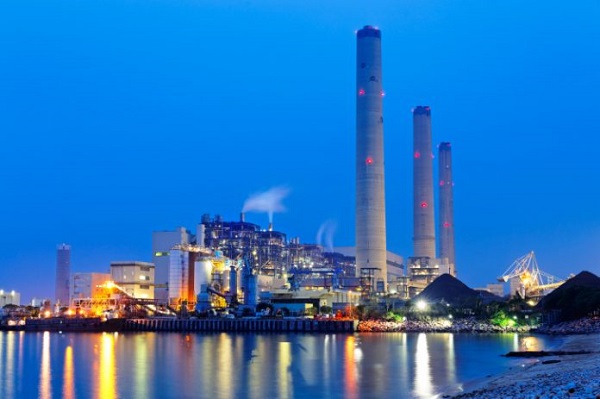
 Energy24 hours ago
Energy24 hours agoU.S. EPA Unveils Carbon Dioxide Regulations That Could End Coal and Natural Gas Power Generation
-
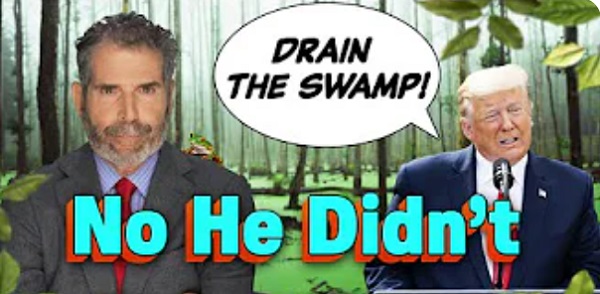
 John Stossel23 hours ago
John Stossel23 hours agoThe Swamp Survived: Why Trump Failed to “Drain the Swamp”
-
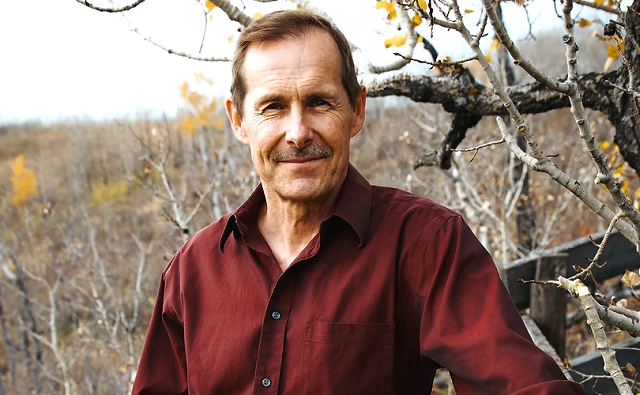
 Alberta1 day ago
Alberta1 day agoCanadian Christian chiropractor fights ‘illegal’ $65,000 fine for refusing to wear mask
-
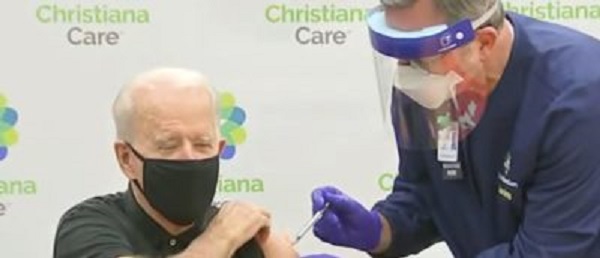
 COVID-191 day ago
COVID-191 day agoCOVID Is Over — But Did We Learn Anything From It?
-
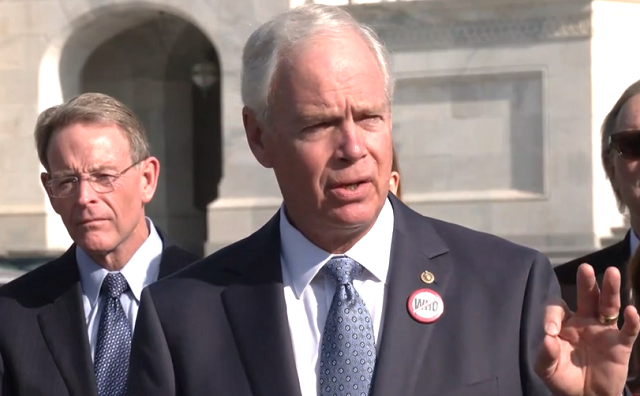
 Great Reset2 days ago
Great Reset2 days agoAll 49 GOP senators call on Biden admin to withdraw support for WHO pandemic treaty
-
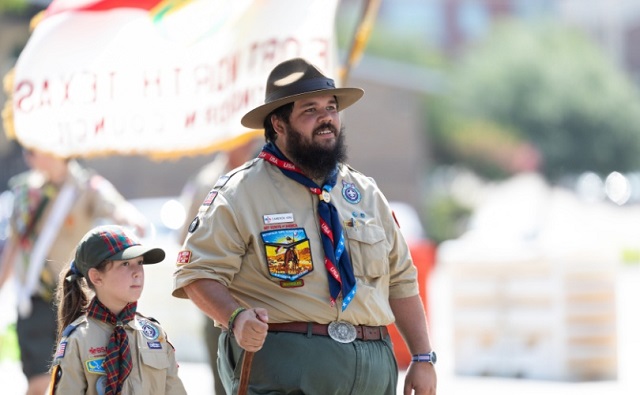
 Opinion12 hours ago
Opinion12 hours agoBoy Scouts of America changes name to ‘Scouting America’ to be ‘more inclusive’
-
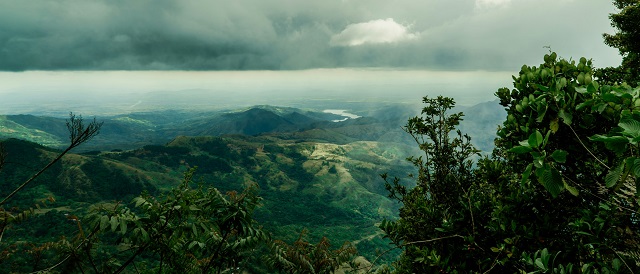
 illegal immigration2 days ago
illegal immigration2 days agoPanama Elects President Vowing Shutdown Of Key Routes To US Used By Over Half A Million Migrants
-

 Media1 day ago
Media1 day agoCBC tries to hide senior executive bonuses



